Yanick Wilisky worked nearly 10 years at Hybride where he participate in projects like SPY KIDS, 300 or SIN CITY. In 2007, he founded with Marc Bourbonnais, Modus FX. He supervised the effects of films as MR. NOBODY, BARNEY’S VERSION or THE AMERICAN.
What is your background?
It all started in 1986 when I saw my first CG short film TONY DEPELTRIE. It was love at first sight. It’s only several years later that I graduated from a computer graphic program. Got my first internship at Fantome in Paris which where producing INSEKTORS at the time. Got my first contract at Mainframe Entertainment in Vancouver to work on BEAST WARS and REBOOT. After a few years I moved back to my hometown in Quebec to join the team at Hybride where I worked on more than 25 films over 10 years. I then moved on and founded Modus FX with Marc Bourbonnais. We will be celebrating our 4th anniversary in July!
How was your collaboration with director Duncan Jones and production VFX supervisor Louis Morin ?
I have work with Louis on five films including SOURCE CODE. Louis is a truly wonderful visual effects supervisor. He has a collaborative approach to the creation process that highly motivates a team and the end result reflects on screen. It was my first experience with Duncan. I was a big fan of his earlier work (MOON) and its always very exciting to work with a visionary director. The whole team knew they were in good hands and we gave Duncan everything we had.
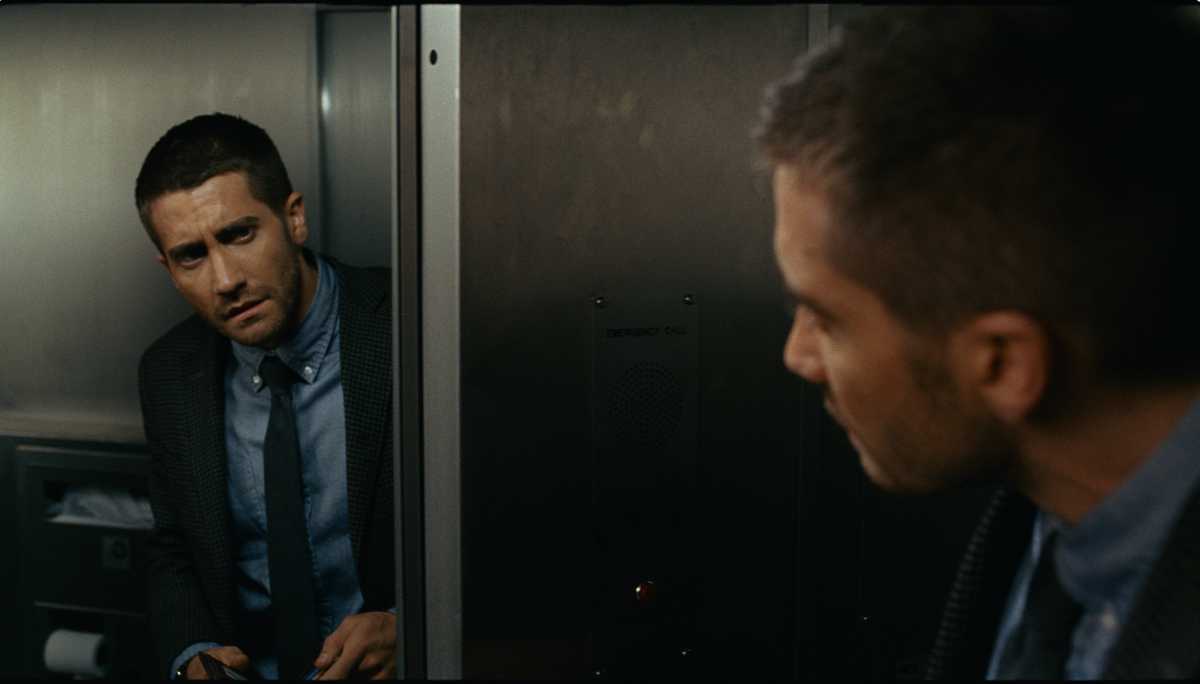 |
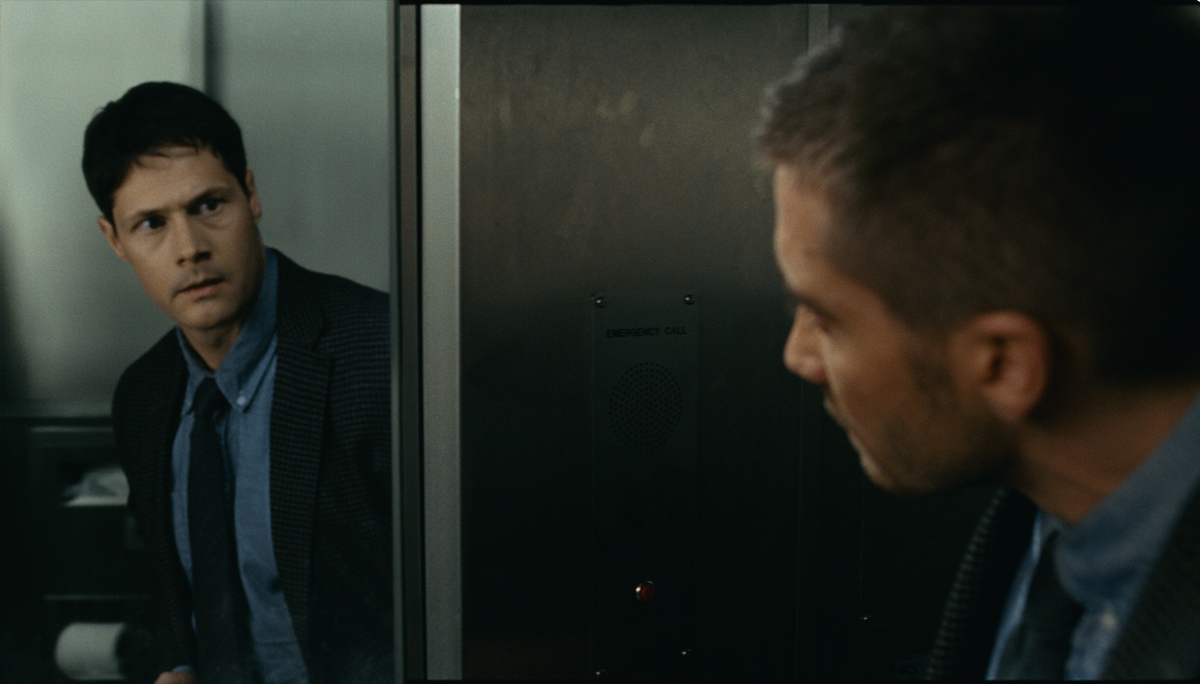 |
How did Modus FX got involved on this show?
Louis contacted us in the winter of 2010 asking if we would be interested in doing some previz on his next production.We had already received the script and were very impressed with the potential so we jumped on the opportunity. At the same time, as the previz was progressing, we started looking at potential sequences and assets for which Modus FX could make a difference in the film.
What are the sequences made by Modus FX?
We ended up doing the vast majority of the CG train shots (aerial, medium and close-up shots), the “Glenbrook Station” area (CG Suburbs, CG Surroundings, Set extension of the station, CG Parking lot), a few interior train windows, a few explosions, Chicago mayhem sequence (crowd simulation, traffic jam) and most of the CG assets (stunt doubles, CG vehicles, CG environments).
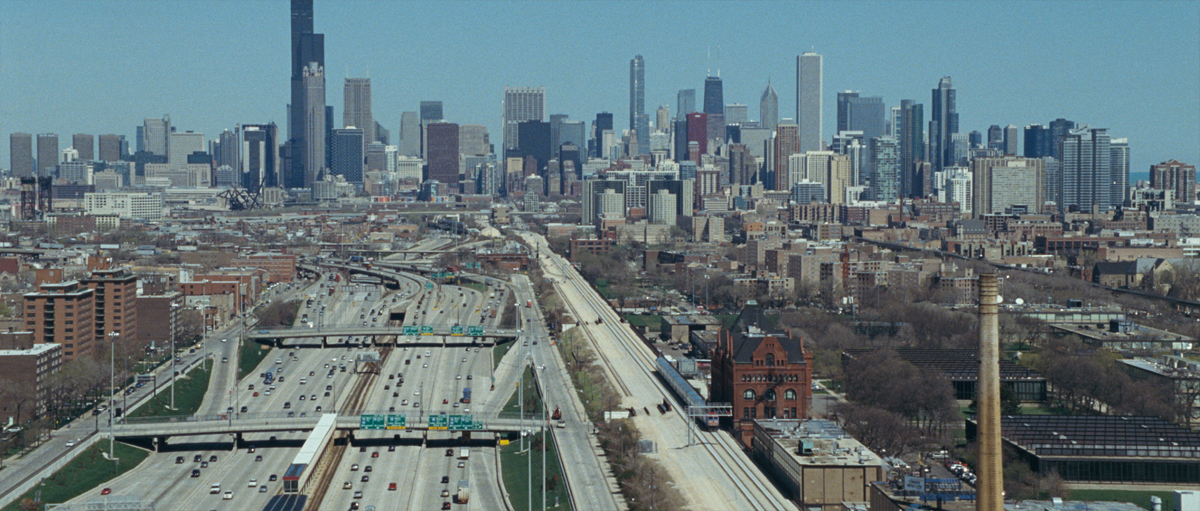 |
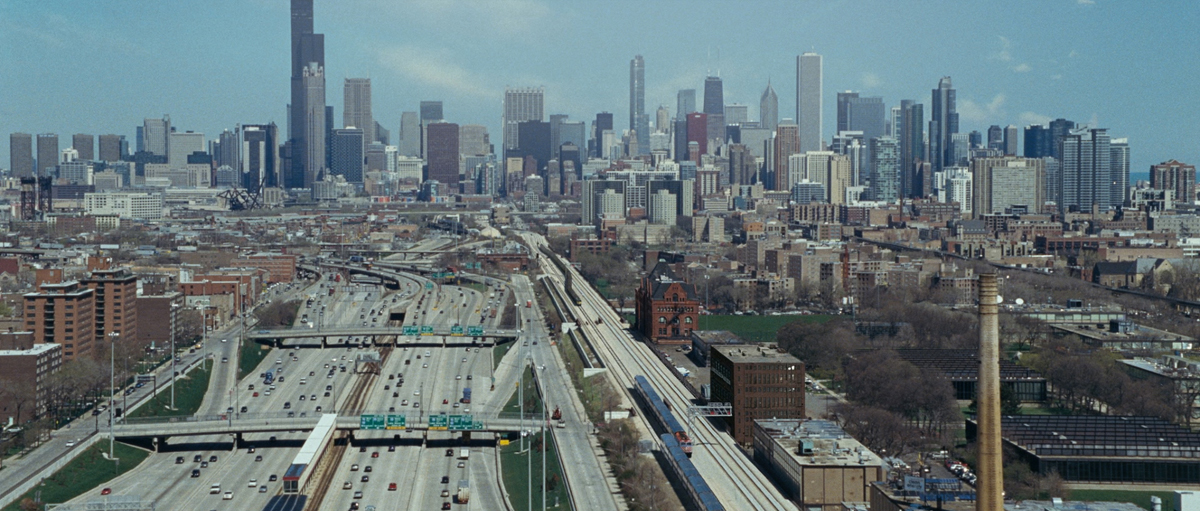 |
Can you explain to us in details the creation of the CG train and its integration?
The train was build from original design that was provided to us by the art department. We recreated it part by part, accurately, from existing references we had found from our research. We ended up doing over 3,000 train pieces. Most of these parts had a very reflective surface. Louis provided a few hundred HDR shots of a similar train from every angle which was very useful. The other challenge with such a reflective surface is all the reflection from the surrounding interaction. We solved this challenge using three different techniques (CG Doubles, Passenger plates used as a reflection pass and additional passenger projected when needed).
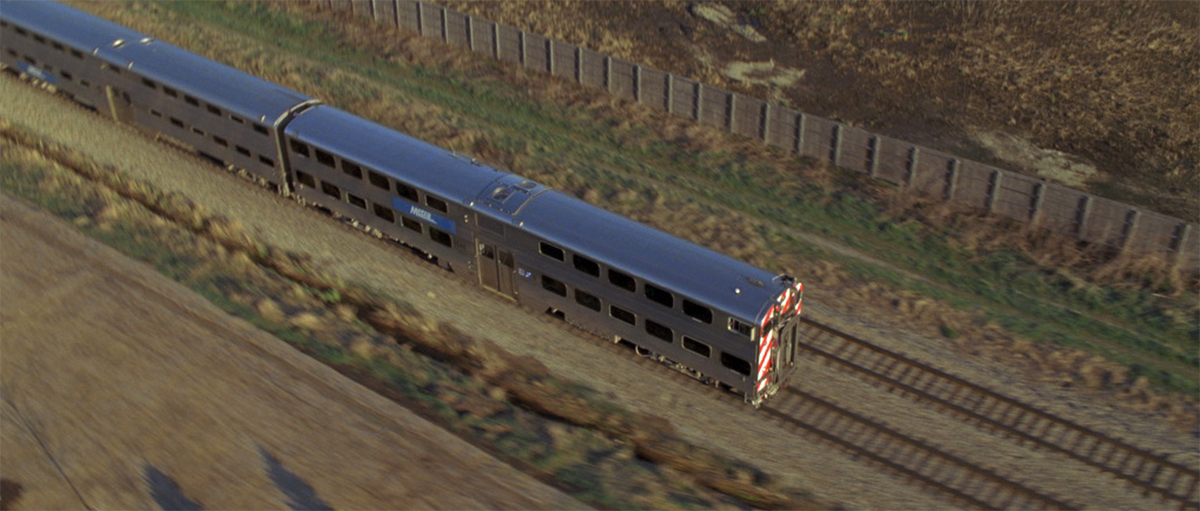 |
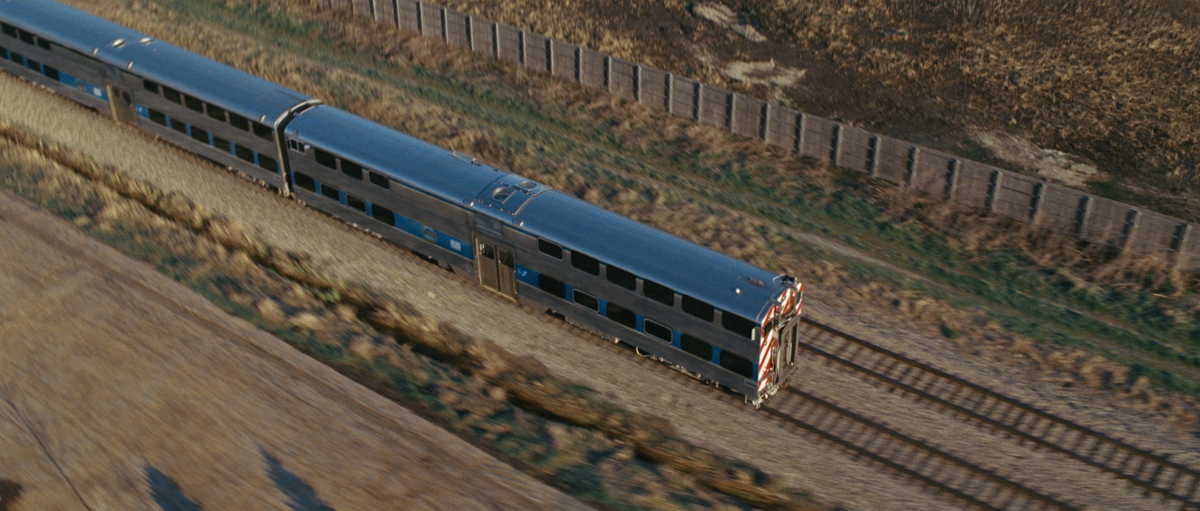 |
What was the main challenge with the train creation?
To photo-realistically obtain the proper reflection property of all the pieces of the train was the biggest challenge of all.
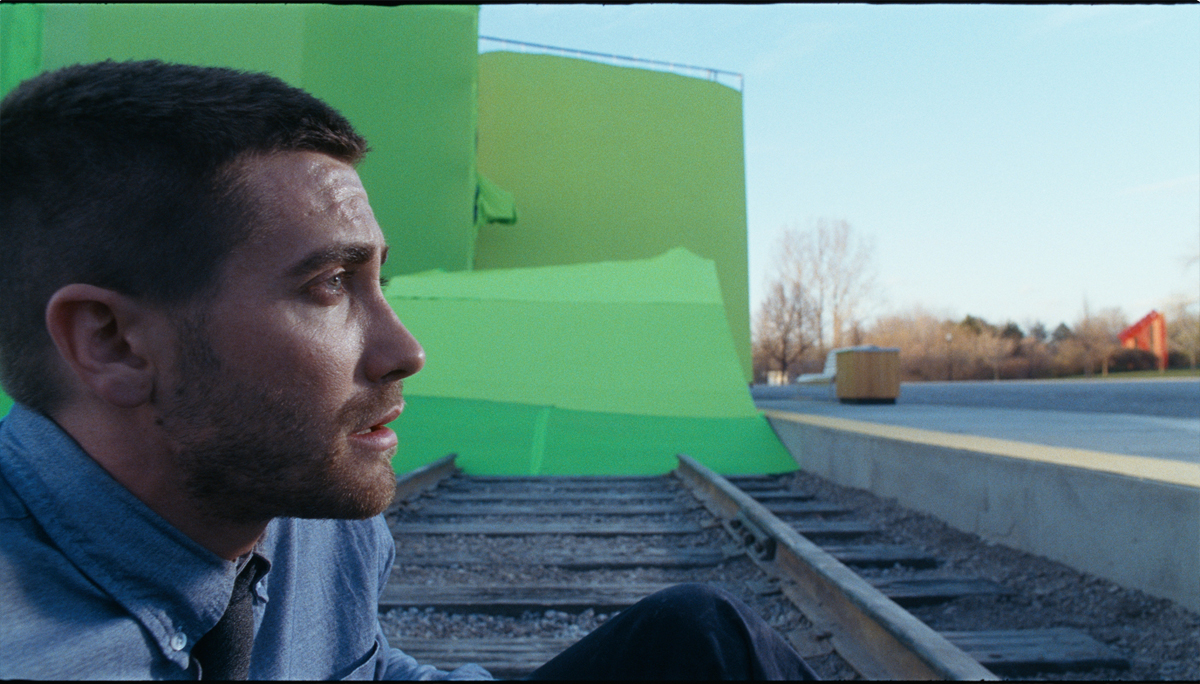 |
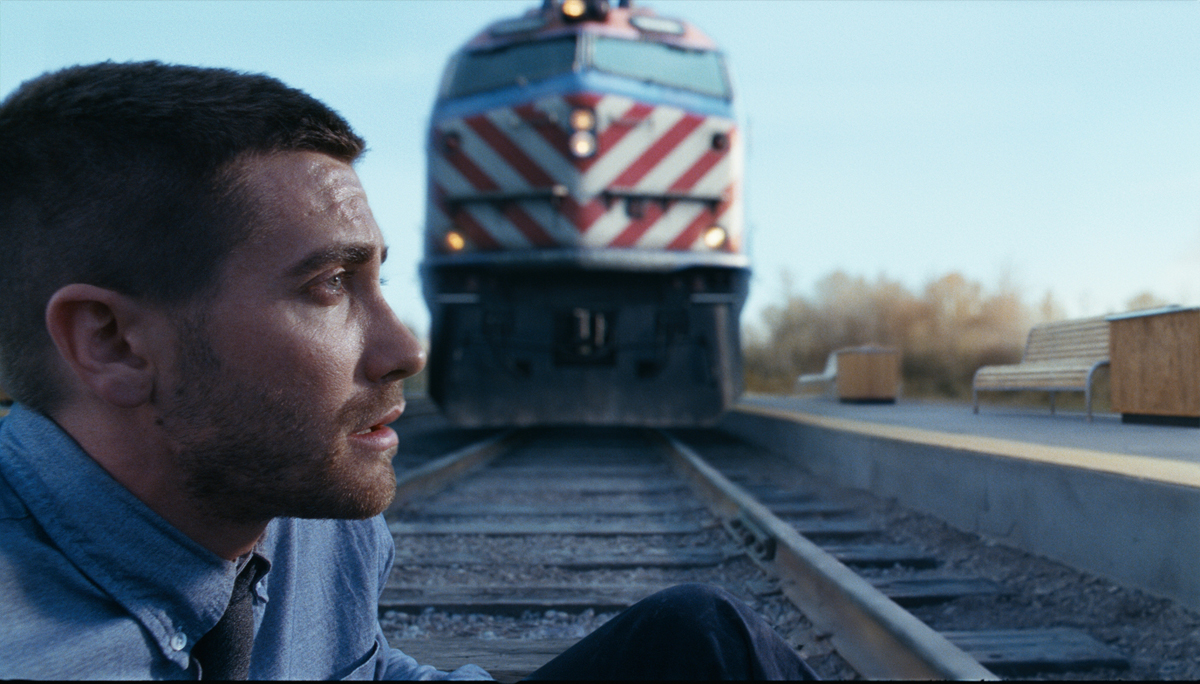 |
How did you create the Glenbrook station and its environment?
We started by creating a 2km aerial map based on accurate data from the Chicago area with streets, vegetation, ground elevation, traffic lights, etc. We based our train station distance from downtown Chicago with information from the script: We knew the train was stopping at Glenbrook at 7.45am, knew the speed of the train, how much time before the explosion and its exact position at that time. Once the 8km distance was confirmed we then started laying all our shots with our accurate CG model of Chicago. We created a vegetation bank of all type of trees in the Chicago area. And we finally created a bank of CG cars for the parking lot. With all these assets in place it was then easier to create a realistic surrounding environment.
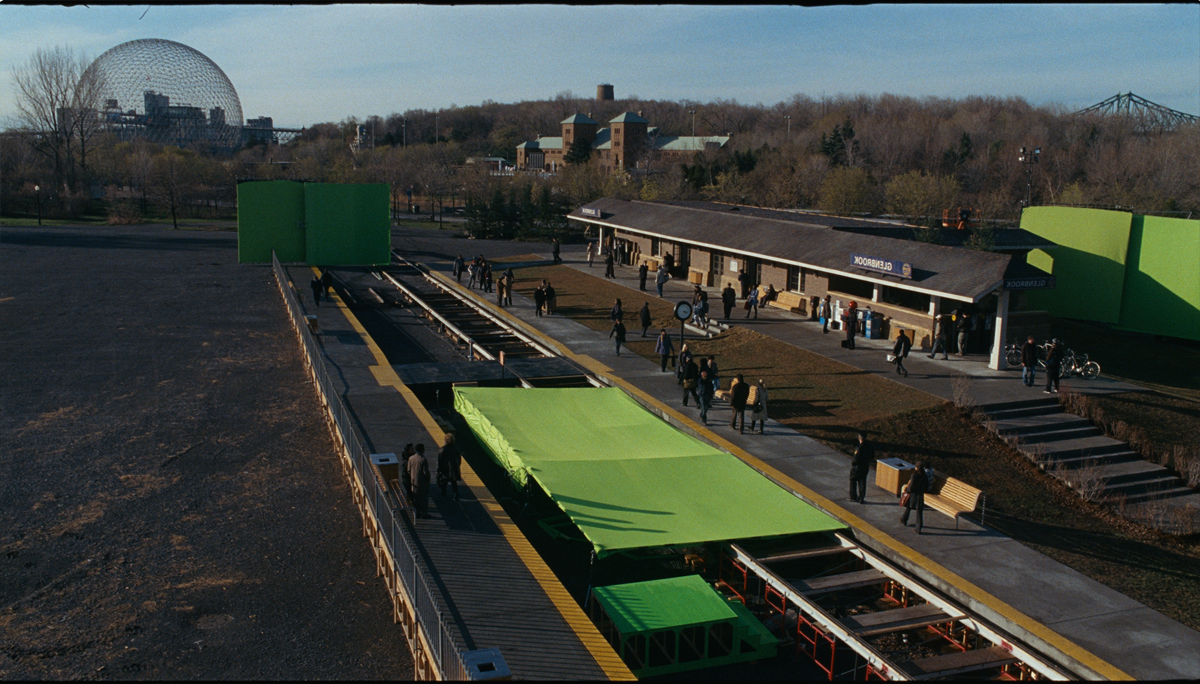 |
 |
How was the collaboration with the others VFX vendors and the assets sharing?
Modus was providing the majority of all the assets to the other vendors and since we were all using similar CG software packages it eased up the process. We could then exchange scripts with the other vendors so they could understand the structure before implementing it back into their pipeline.
How did you create the evacuation scenes of Chicago?
We had a plate with cars passing in them which where very useful for references. The layout was created from actual photos from the location from different points of view. We created the traffic jam simulation and the crowd evacuation with Massive. Duncan kept on asking for more people and more cars which was the perfect thing to ask in this situation. It definitely pushed our limits in optimizing and rendering capabilities.
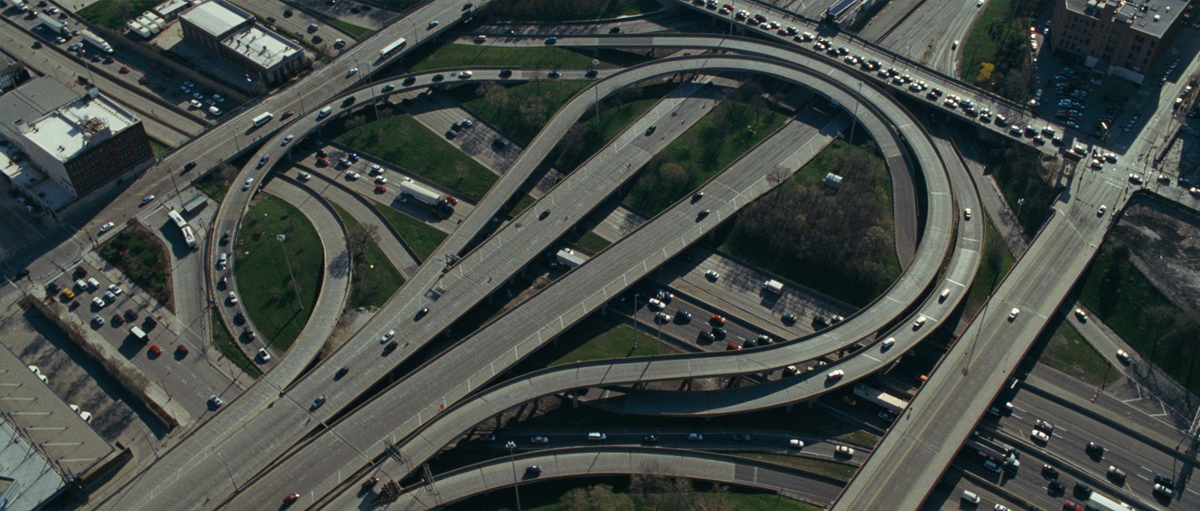 |
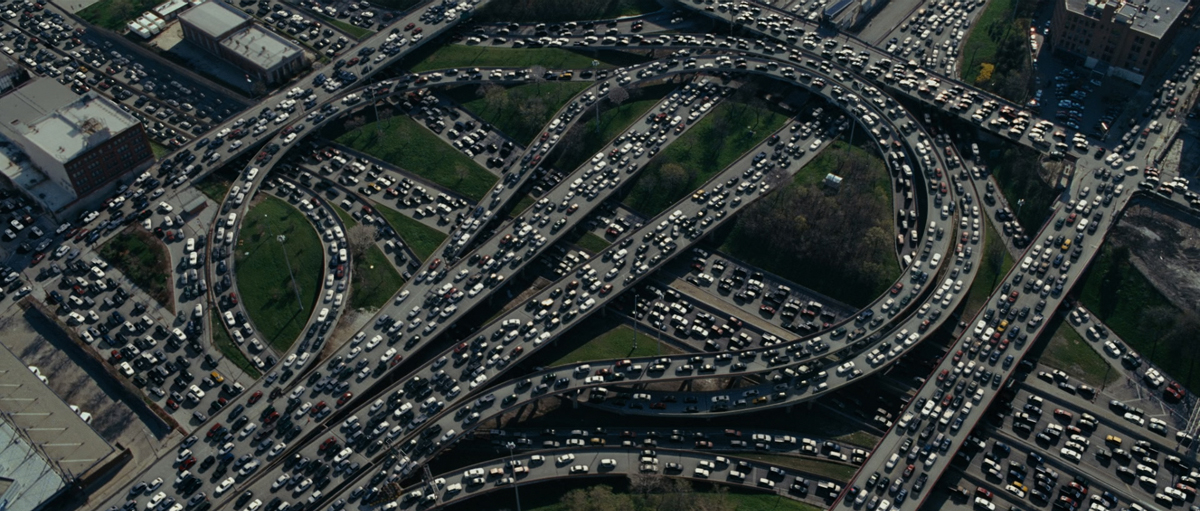 |
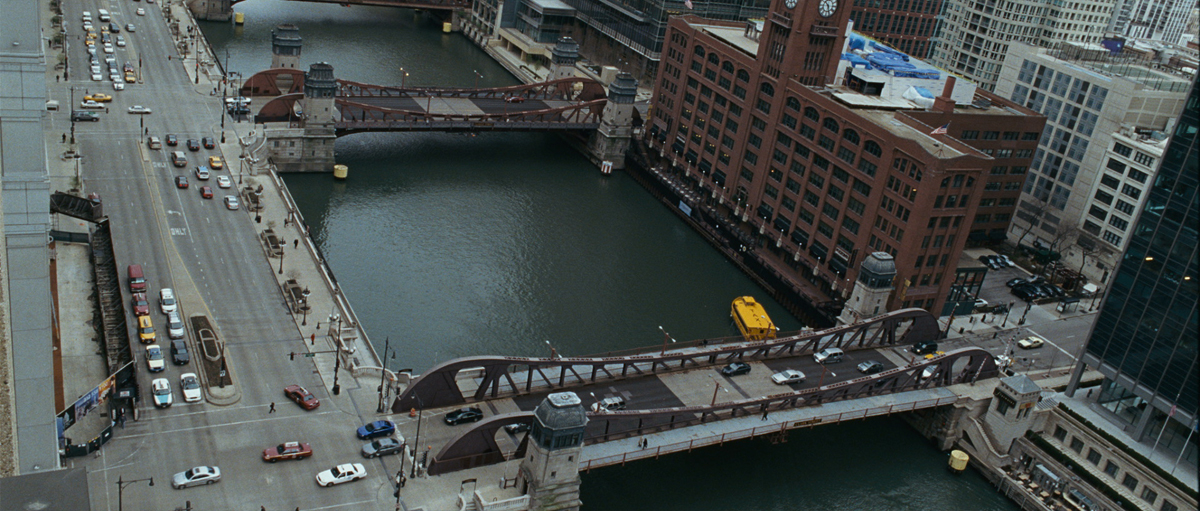 |
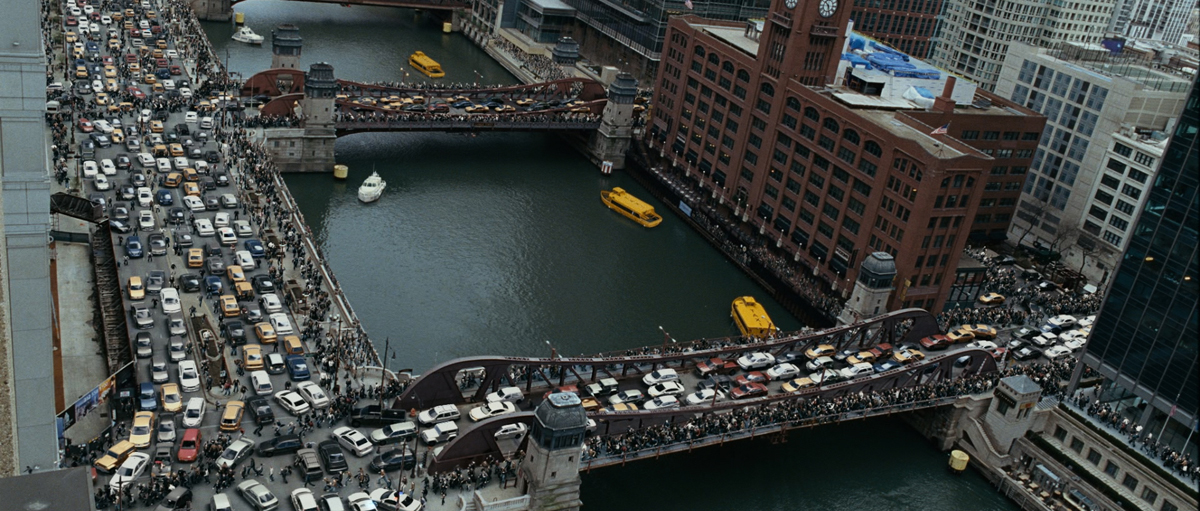 |
Can you explain to us the explosion shots and in particular the one with Jake coming in front of us?
We had to create a specific kind of FX where the explosion detonate right behind Jake and he is thrown towards the camera. Louis Morin had filmed some fantastic interior train explosion elements which we used as a base. We started the action with the live acting of Jake Gyllenhaal and we did the CG takeover on a few frames after that.
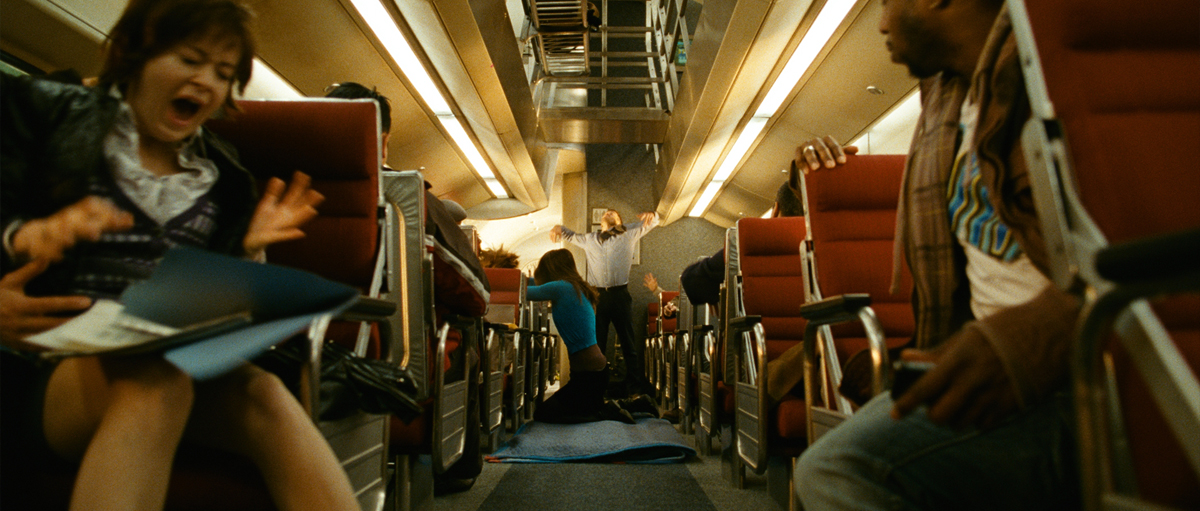 |
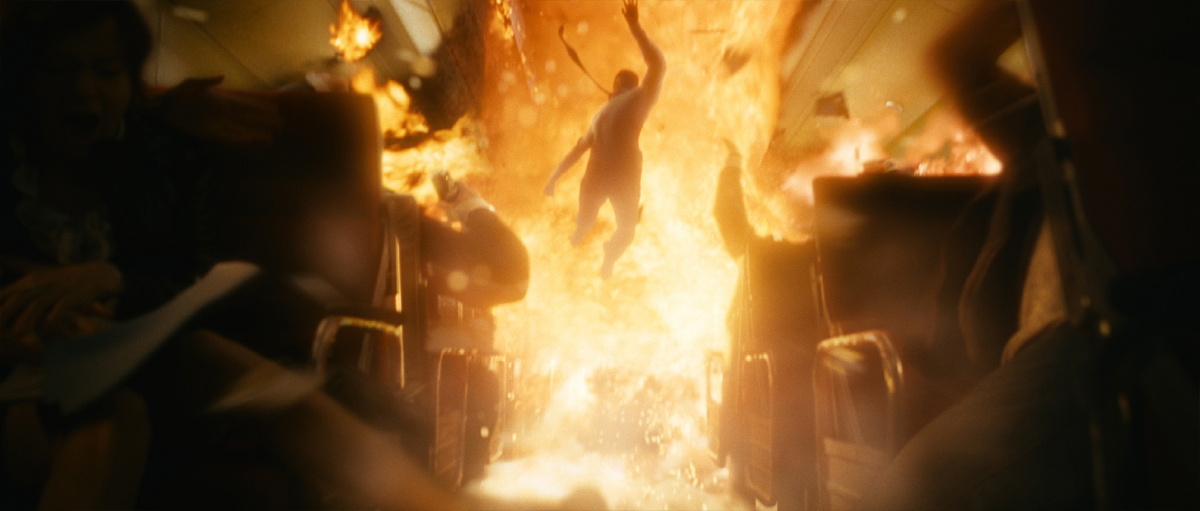 |
What was the biggest challenge on this show?
Every aspect had its own challenges: for the train, it was the close-up shots, for the mayhem/evacuation, the heavy simulation and geometry, and for the CG environment of the train station, it was to recreate an environment so that people would never feel it’s not real even though more than half of it is computer-generated.
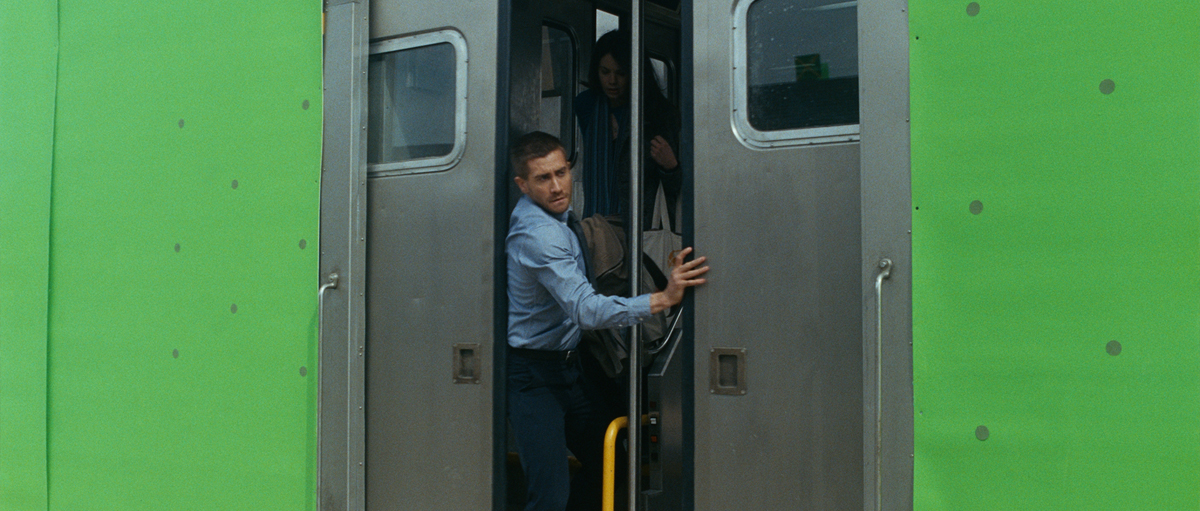 |
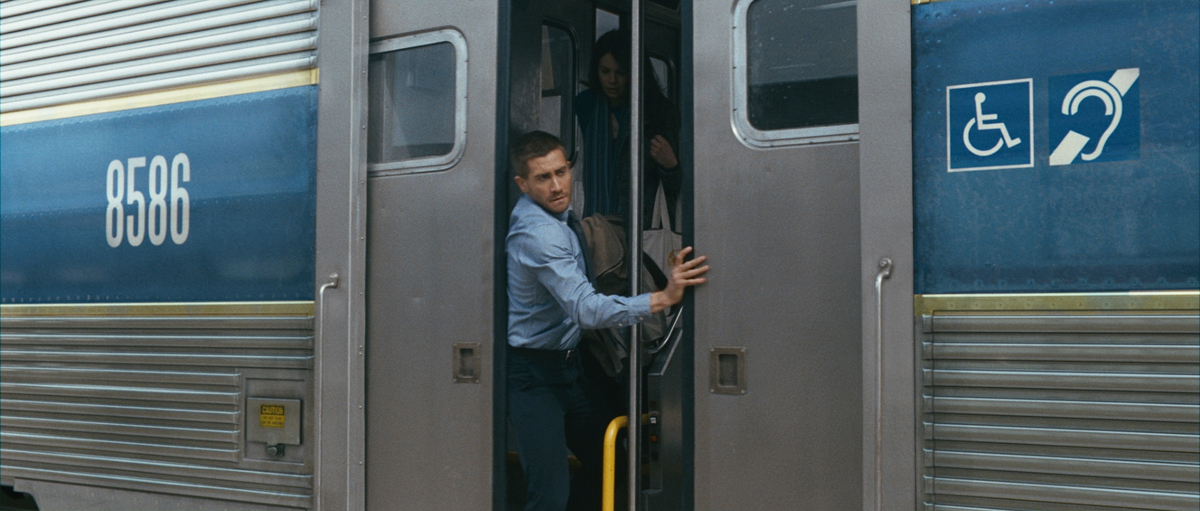 |
Was there a shot or a sequence that prevented you from sleeping?
It was the biggest project that Modus had overtaken in its young history. We did have more then a few late nights but never one that stopped me from sleeping. I needed every single minute of rest I could get because there would be more challenges to overcome the next day.
What are your software and your pipeline at Modus FX ?
We use Autodesk Softimage as our main CG package, The Foundry’s Nuke for compositing, Side Effects’ Houdini for simulation, Massive for crowds and Assimilate Scratch for daily reviews and digital intermediate.
How long have you worked on this show?
We ended up working 8 months on SOURCE CODE.
How many shots have you made and what was the size of your team?
We completed 98 shots and provided 60 CG backgrounds to various vendors.
We had up to 75 artists at some point in the production.
What did you keep from this experience?
The Best. Honestly. Louis was great. Duncan was great. Got invited to the premiere during the SXSW in Austin, TX. We can totally achieve the best of the best when we work as a team like we did.
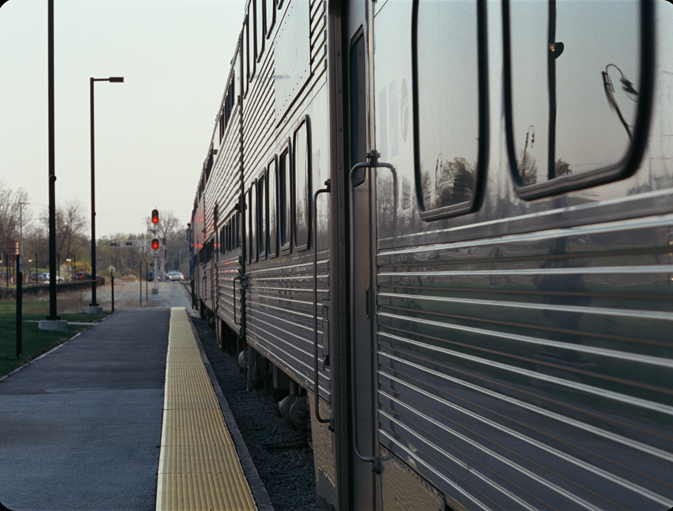 |
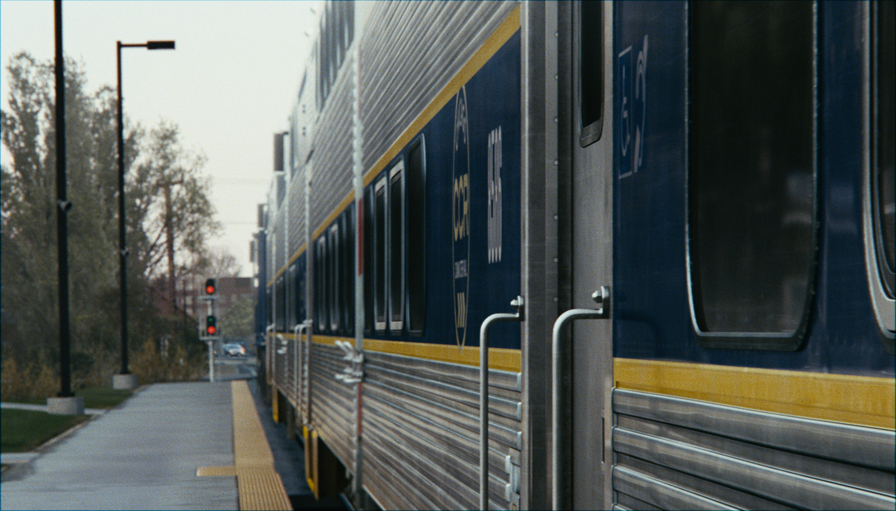 |
What is your next project?
We are currently working on IMMORTALS (Tarsem Signh) and EVERYBODY LOVES WHALES.
What are the four movies that gave you the passion for cinema?
Hard one. FIGHT CLUB blew my mind and got me very excited. THE MATRIX, definitely. I would have to say EVIL DEAD from Sam Raimi got me hooked pretty early and most lately INCEPTION. There is obviously a lot more but there the first one that popped.
A big thanks for your time.
// WANT TO KNOW MORE?
– Modus FX: Dedicated page about SOURCE CODE on Modus FX website.
– fxguide Article about SOURCE CODE on fxguide.
– Source Code: Swiss Official website of SOURCE CODE.
SOURCE CODE – VFX BREAKDOWN – MODUS FX
© Vincent Frei – The Art of VFX – 2011




